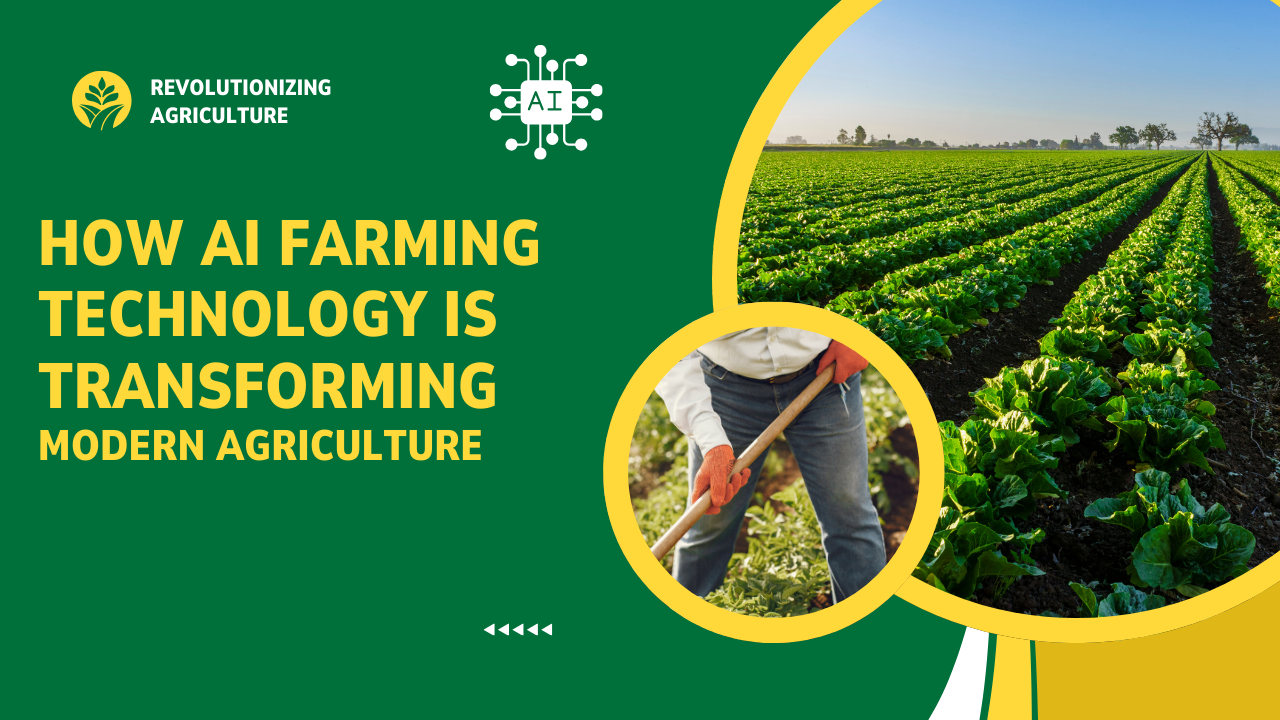Introduction
Human civilization has always depended on agriculture for survival, supplying food and other essential materials for life. However, traditional farming methods are faced with a myriad of challenges such as lack of resources, population explosion, global warming amongst others. To solve these problems, technology has been integrated into the agricultural sector with Artificial Intelligence (AI) playing a major role in revolutionizing crop production and farm management.
Historical Context
The development of farming technology has reached numerous milestones in its evolution. From the invention of plow to the introduction of modern irrigation systems, each step aimed at enhancing productivity and efficiency levels. The latest milestone in this journey is AI’s integration into farming which started off seriously in the early 21st century. Through analyzing large amounts of data and making immediate decisions for instance, AI has opened new horizons within the realm of agriculture.
AI Applications in Farming
Precision Agriculture
Precision farming involves utilizing artificial intelligence tools and techniques to optimize field-level management related to arable farming. This implies that through sensors, drones plus GPS technologies among others; precision agriculture by use of AI allows pinpoint delivery of water, fertilizer as well as pesticides.
Crop Monitoring and Health Analysis
Crop health is now monitored in real time by AI systems. The use of drones equipped with cameras and sensors make it possible for AI to identify diseases, pests and nutrient deficiency on time. This means that farmers are able to intervene in good time and avoid huge losses.
Automated Machinery and Robotics
AI also finds application in this sector through automation in agriculture. Today, autonomous tractors, ai-driven drones and robot harvesters are commonly found in the modern farms. Such machinery performs tasks like planting, watering as well as harvesting with greater precision and efficiency thereby resulting to reduced human labor requirements.
AI Farming Technology Advantages
Benefits of Integrating AI Into Agriculture include:
Increased Profitability and Output: An artificial intelligence optimizes farming, leading to enhanced yields and better use of resources.
Sustainable Resource Management: AI aids in the accurate administration of products thus lessening waste and promoting sustainable agriculture.
Reduced Labor Costs: Automation decreases reliance on manual labor hence lowering operation expenses.
Better Crop Yield and Quality: Prompt identification of pests and diseases leads to healthier crops with higher yields.
Improved Decision-Making Process: Through the analysis of data, AI provides insights that are crucial for decision making purposes among farmers.
Barriers And Constraints
However, there are challenges that hinder the application of Artificial Intelligence in Agriculture:
High Cost Of Initial Investment: AI implementation can be costly because it requires technology as well as infrastructure.
Privacy And Security Issues In Data : The utilization of data in AI based systems raises questions on privacy as well as security concerns.
Technical Integration: There is difficulty in blending traditional agricultural practices with AI systems.
Technical Skills And Training Required For Technical Skills And Training: This implies that farmers must acquire new competencies so that they can effectively utilize their facilities.
Future Prospects
Future prospects such as AI in agriculture look like potential with many emerging trends and innovation in sight. AI-driven vertical farming, smart greenhouses, and advanced robotic systems are expected to further revolutionize the industry. As AI technology continues to evolve, its potential to address world food security and sustainability challenges will only increase.
Conclusion
AI farming technology has the potential to transform agriculture, making it more efficient, sustainable, and productive. Embracing these advances can overcome many challenges today’s farmers face, ensuring a secure prosperous future for agriculture.

